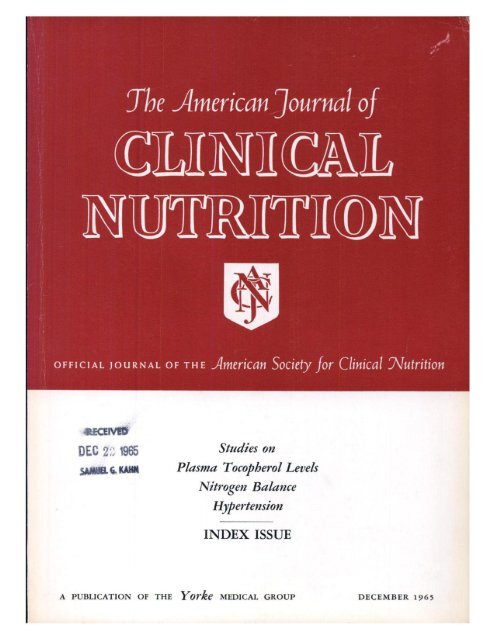Maternal protein intake during pregnancy and obesity risk in mothers and offspring: a prospective cohort study
IF 6.5
1区 医学
Q1 NUTRITION & DIETETICS
引用次数: 0
Abstract
Background
The optimal dietary macronutrient composition during pregnancy to mitigate obesity risk in mothers and offspring remains unclear.
Objectives
This study aims to assess associations between maternal dietary macronutrient composition and obesity outcomes in mothers and offspring.
Methods
We analyzed 66,360 singleton pregnancies from the Danish National Birth Cohort, with dietary intake assessed at gestational week 25. Outcomes included maternal postpartum weight retention (PPWR) at 6 and 18 mo and offspring’s birth weight, risks of small for gestational age (SGA) and large for gestational age (LGA), body mass index (BMI) z-scores, and overweight/obesity (OWOB) risk at ages 7, 11, and 14 y. Mixture models with response surface visualization examined interactive macronutrient associations, and mixed restricted cubic splines assessed potential nonlinear relationships between maternal protein intake and obesity outcomes.
Results
Mean maternal macronutrient compositions were 15.2% protein, 30.2% fat, and 54.1% carbohydrate. Response surfaces revealed that maternal lower protein intake (%), diluted by higher fat and/or carbohydrate, was associated with higher maternal PPWR at 6 and 18 mo but lower birth weight and BMI z-scores in offspring at ages 7, 11, and 14 y. Mixed restricted cubic splines indicated nonlinear associations between maternal protein intake (%) and SGA risk (nonlinear P = 0.003) and LGA (nonlinear P = 0.04), with a threshold around 15% protein; below this, SGA risk increased whereas LGA risk decreased. Linear associations were observed for risks of substantial PPWR (PPWR >5 kg) and childhood OWOB risk (nonlinear P > 0.05). Each 5% higher protein intake during pregnancy was related to a lower risk of substantial PPWR at 6 mo (odds ratio: 0.90; 95% confidence interval: 0.85, 0.95) and 18 mo (0.88; 0.82, 0.94) but higher risks of OWOB at ages 7 y (1.07; 1.01, 1.15) and 11 y (1.11; 1.03, 1.18), with no association at 14 y (1.02; 0.95, 1.10).
Conclusions
Higher maternal protein intake during pregnancy was associated with lower PPWR and SGA risk but higher LGA and childhood OWOB risks, highlighting potential trade-offs in maternal and offspring obesity outcomes.
怀孕期间母亲蛋白质摄入与母亲和后代肥胖风险:一项前瞻性队列研究
背景:怀孕期间的最佳饮食常量营养素组成以减轻母亲和后代的肥胖风险尚不清楚。目的:本研究旨在评估母亲膳食宏量营养素组成与母亲及其后代肥胖结局之间的关系。方法:我们分析了来自丹麦国家出生队列的66360例单胎妊娠,并在妊娠第25周评估了饮食摄入量。结果包括6个月和18个月的产妇产后体重保持(PPWR)和后代的出生体重,小胎龄(SGA)和大胎龄(LGA)的风险,体重指数(BMI) z分数,以及7岁,11岁和14岁的超重/肥胖(OWOB)风险。反应面可视化的混合模型检查了相互作用的巨量营养素关联。混合限制三次样条评估了母体蛋白质摄入量与肥胖结果之间潜在的非线性关系。结果:平均母体常量营养素组成为15.2%蛋白质,30.2%脂肪和54.1%碳水化合物。响应面显示,母亲较低的蛋白质摄入量(%),被较高的脂肪和/或碳水化合物稀释,与母亲在6和18个月时较高的PPWR相关,但与后代在7岁、11岁和14岁时较低的出生体重和BMI z-评分相关。混合限制三次样条显示,母亲蛋白质摄入量(%)与SGA风险(非线性P = 0.003)和LGA风险(非线性P = 0.04)之间存在非线性关联,阈值约为15%蛋白质;低于此值,SGA风险增加,而LGA风险降低。大量PPWR (PPWR bbb50 kg)与儿童期OWOB风险呈线性相关(非线性P > 0.05)。怀孕期间蛋白质摄入量每增加5%,6个月时发生严重PPWR的风险就会降低(优势比:0.90;95%置信区间:0.85,0.95)和18个月(0.88;0.82, 0.94),但7岁时患妊娠期妊娠的风险较高(1.07;1.01, 1.15)和11y (1.11;1.03, 1.18),在14 y (1.02;0.95, 1.10)。结论:孕期较高的母体蛋白质摄入量与较低的PPWR和SGA风险相关,但与较高的LGA和儿童OWOB风险相关,突出了母体和后代肥胖结局的潜在权衡。
本文章由计算机程序翻译,如有差异,请以英文原文为准。
求助全文
约1分钟内获得全文
求助全文
来源期刊
CiteScore
12.40
自引率
4.20%
发文量
332
审稿时长
38 days
期刊介绍:
American Journal of Clinical Nutrition is recognized as the most highly rated peer-reviewed, primary research journal in nutrition and dietetics.It focuses on publishing the latest research on various topics in nutrition, including but not limited to obesity, vitamins and minerals, nutrition and disease, and energy metabolism.
Purpose:
The purpose of AJCN is to:
Publish original research studies relevant to human and clinical nutrition.
Consider well-controlled clinical studies describing scientific mechanisms, efficacy, and safety of dietary interventions in the context of disease prevention or health benefits.
Encourage public health and epidemiologic studies relevant to human nutrition.
Promote innovative investigations of nutritional questions employing epigenetic, genomic, proteomic, and metabolomic approaches.
Include solicited editorials, book reviews, solicited or unsolicited review articles, invited controversy position papers, and letters to the Editor related to prior AJCN articles.
Peer Review Process:
All submitted material with scientific content undergoes peer review by the Editors or their designees before acceptance for publication.

 求助内容:
求助内容: 应助结果提醒方式:
应助结果提醒方式:


